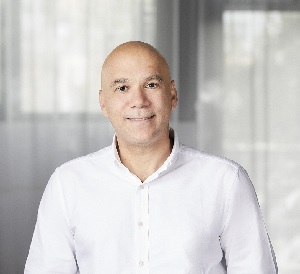Why building a diverse workforce in healthcare matters in Asia

As the world becomes increasingly connected across borders and time zones, there is a pressing need to embrace policies that promote diversity, equity and inclusion (DE&I). Nowhere is this more critical than ever in the healthcare sector – especially for healthcare organisations and communities in Asia that interact with patients and coworkers from a variety of different ethnic and racial backgrounds. As we bring in people who understand different cultural nuances, we can address the unmet needs of the region’s underrepresented populations, ensure better health outcomes, and create an environment where our coworkers feel empowered to share their own points of view.
Diverse and inclusive workforces drive innovation and growth
Research shows that organisations with inclusive cultures are two times as likely to meet or exceed financial targets and eight times more likely to achieve better business outcomes. This is in part because when you bring people together who have different worldviews, in an environment where they feel safe to share alternative ideas and opinions, this can spark creative ideas, new approaches to problem-solving, and drive innovation and growth. Diverse teams can draw from each individual’s unique experiences, skillsets and expertise and are key to inspiring innovative solutions for multifaceted problems we face in areas such as healthcare.
As leaders, it is important that we create an environment where everyone feels like they belong and where all employees are able to share their ideas and thrive equally. Whether that be through hiring more people from underrepresented groups or listening proactively to gender minority colleagues.
We are working hard to incorporate that thinking into our own culture at Roche: As part of our 2023 plans, we aimed to include more women in leadership positions and grow our own leaders from Asia-Pacific into leadership positions, and I am pleased to say that we have made good progress towards those goals. But we must always push to do better in all areas of DE&I.
Inclusive thinking impacts all aspects of the patient journey
For healthcare organisations, having a diverse workforce ensures that no patient is left behind. Too often we hear of chronic health conditions being underdiagnosed or misdiagnosed for people in underrepresented and underserved communities. For example, as we discovered as part of our XProject, there is a severe lack of data to develop effective diagnostic and therapeutic tools for patients with conditions such as polycystic ovary syndrome (PCOS) and endometriosis, despite around 10% of the female population being affected by them.

“For healthcare organisations, having a diverse workforce ensures that no patient is left behind.” – Ahmed Elhusseiny, Area Head, Asia-Pacific, Roche Pharmaceuticals
Sadly, this will not come as a surprise to people working in healthcare. For decades, the majority of medical information and data that we have relied on were based on studies carried out with male patients. Women have been historically underrepresented in trials with some studies now suggesting that they run a higher risk of being overmedicated as a result. This gender gap has left women’s health on the sidelines and this is something that we have committed to redress whether that is within our R&D process or through the work we do around diagnosis, treatment and management of disease in women.
Racial and ethnic representation in R&D has also been overlooked by healthcare organisations at times. For example, in India, we see a lack of diverse ethnic representation in clinical trials. While it is not mandated by government guidelines, failure to represent multiple ethnicities in such ethnically diverse countries can have lasting repercussions on the health of patients. Much like the case with female patients, healthcare employees are not able to rely on clinical trial data to accurately reflect if a patient group is being properly medicated for their illnesses.
Bridging these fundamental gaps, whether they be ethnicity or gender-related, is the first step in addressing barriers to clinical trial participation, diversifying genetic data for scientific discovery, and increasing access to innovative diagnostic and therapeutic solutions, by Advancing Inclusive Research (AIR).
Including different perspectives can better reflect local patient communities
Part of DE&I is not just recognising that there is a lack of diversity in teams, but actively working to dismantle biases and including minority groups in conversations about patients and medical treatments.
In a region like the Asia-Pacific, a lot can be achieved if we take the time to include patient groups and local collaborators to better serve those within their communities. To this end, Roche launched Mission Leapfrog in 2019 to leverage its expertise in oncology and cancer diagnostics and work with patients across the South-East Asian region to bring better, affordable care to underserved communities. We piloted projects in the Philippines and Thailand to provide women with equitable access to cancer screening tests and better information about cancer prevention and this work continues to have an impact for women to this day.
READ MORE: Leveraging gender diversity in the workplace for business success
Great strides have been made in DE&I in healthcare, but we must prioritise advancing it further throughout our employee and patient ecosystems to make sure we are serving our communities to the best of our ability. By ensuring that we are reflecting the diversity in the world in every aspect of our work, we can better serve patients every day, everywhere regardless of their background.
About the author: Ahmed Elhusseiny is Area Head, Asia-Pacific, of Roche Pharmaceuticals.



